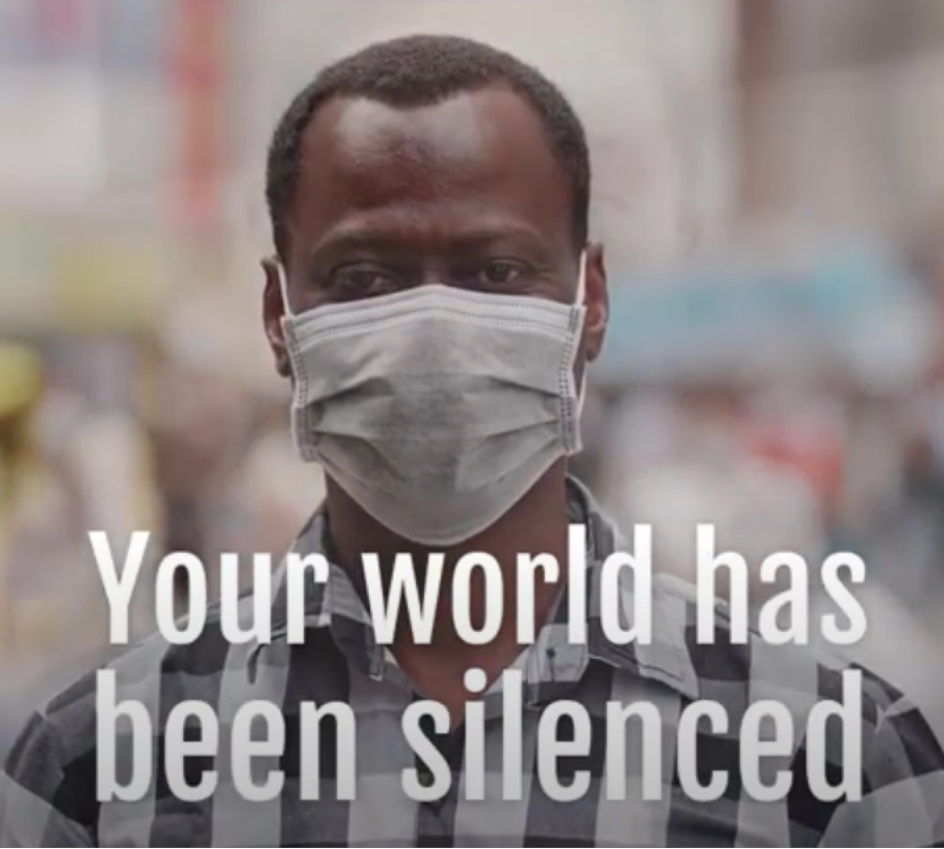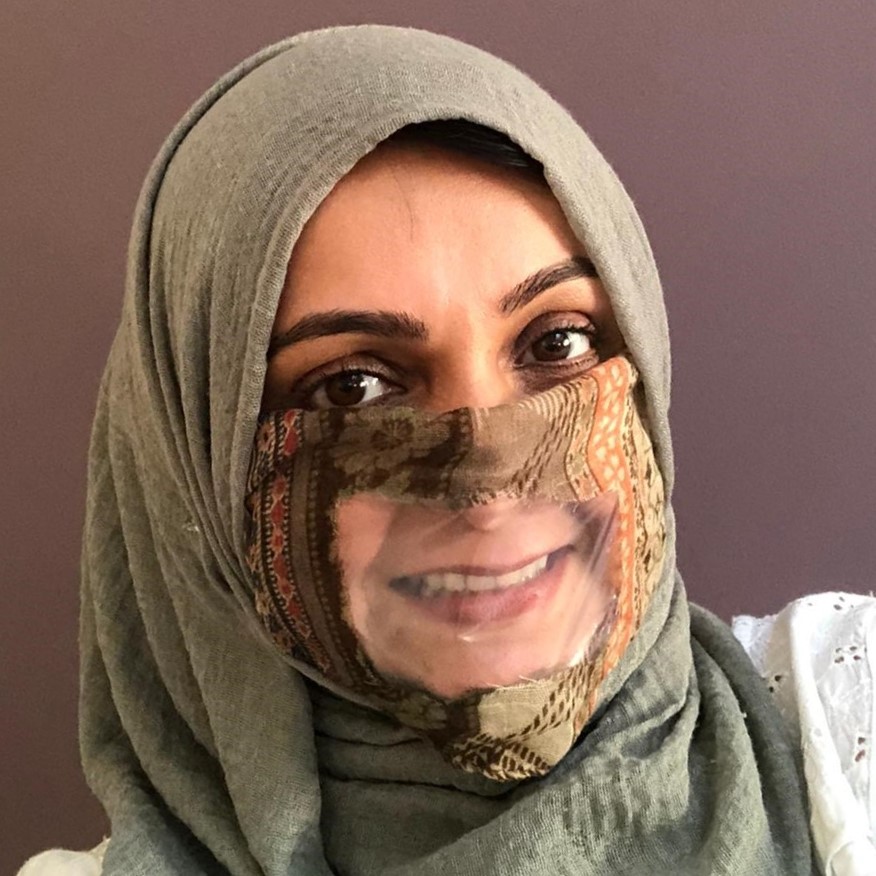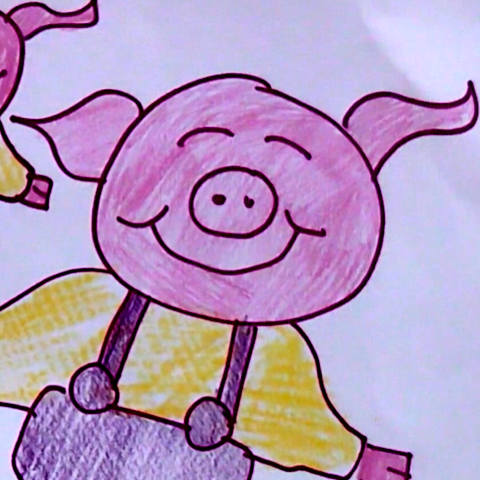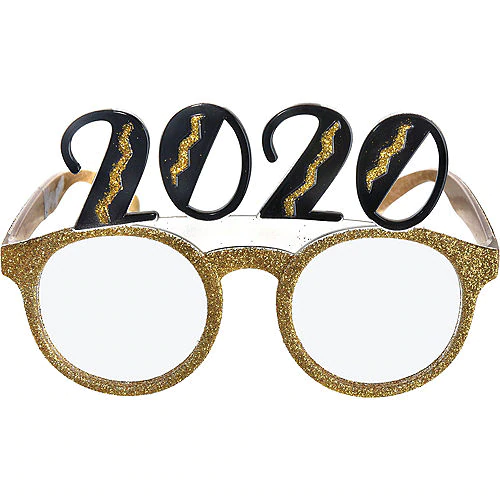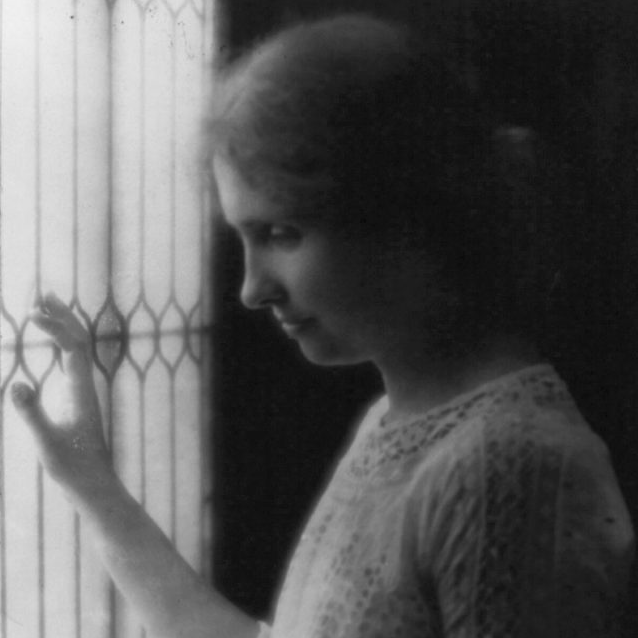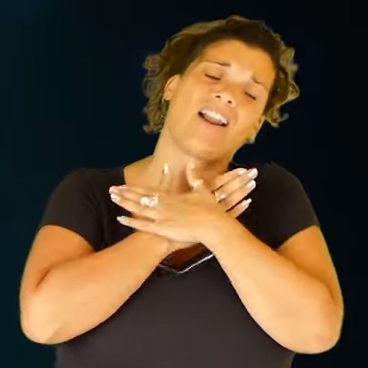We have exciting news!
We have partnered with a company called Robotica to deliver digital communications assistants to facilitate effective communication between speaking and non-hearing people.
Cassie and Niki are avatars developed by Robotica to offer accessibility in the workplace to support colleagues who benefit from being able to see spoken English as Cued Speech, lip speaking readable mouth movements and British Sign Language (BSL).
View a teaser video here:
Transparent face masks – clearly a good idea?
As the Covid-19 coronavirus pandemic is set to affect how we stay safe outside our home for some time to come, we’ve been considering the government’s current advice to wear a face-covering, if possible, ‘in enclosed public spaces, such as public transport and some shops, where social distancing isn’t possible and where you will come into contact with people you do not normally meet’.
While experts investigate the properties of the Covid-19 virus and the effectiveness of non-clinical face coverings, homemade face masks would seem to us like a reasonable precaution, to have at hand and to put on when you are keeping your distance from others and trying to hinder the spread of the virus. Homemade face masks are, no doubt, less effective than surgical masks and respirators, but then again, making something for yourself ensures that professional equipment is reserved for essential workers and healthcare professionals, who are battling this pandemic on the front line.
More and more people are choosing to wear face masks, and as their popularity increases, we are concerned with the profound impact this will have on deaf people, who need to see faces clearly in order to communicate with others. In the months ahead and as the rules for how we go about daily life are established, masks may become the norm. Deaf people face difficulties communicating at the best of times but now they risk even further isolation if the use of face masks becomes common. We are particularly concerned about deaf children’s access to communication in their formative early years because it is so essential that deaf children are able to see the faces of those around them while they are trying to establish a foundation in language.

Face masks need to be transparent! This will allow deaf people to see the facial expressions and lip patterns of mask wearers, so essential for communication. This excellent article by Jasmine Taylor-Coleman of BBC News calls for clear face masks to be ‘the norm’.

Our very own Sagira Jetha and Debbie Hawke have stepped up, needle and thread in-hand, to join a growing movement of deaf-friendly crafters and sewing machinists, to try their hand at designing and making face masks with plastic windows. We think they are rather good.

Like us, you might be thinking that these masks will fog up, being so close to the wearer’s mouth but in this Facebook video by BBC West, mask-maker Sonia Carley claims that simply rubbing the plastic screen over with a bar of soap will solve the issue.
Why don’t you try making one yourself? This article from the NDCS has a number of useful guides.

If you choose to make or wear a clear face mask, please use discretion for anyone very young or with a medical condition. The government has this advice: ‘Face coverings should not be used by children under the age of 2 or those who may find it difficult to manage them correctly. For example, primary age children unassisted, or those with respiratory conditions.’ You can read all the government’s guidance on staying safe outside your home here.
Read to Deaf Children with Cued Speech

The majority of brain development, for any child, occurs in the first three years of life. Reading to and sharing books with babies and young children, and giving them time to respond, feeds their brain, helps them learn new words and grows their vocabulary. This is true for deaf children too. Cued Speech is the perfect method to enable parents to show their deaf children the wonder of books, the magic of stories and the gift of language.

Reading to your child with Cued Speech will allow them to see what you’re saying. You will be able to talk about what you’re reading, your child will discover new words and you will be able to enjoy the storytelling together, all within one activity which helps to build important foundations for your deaf child’s language development.

The National Literacy Trust lists some of the key benefits of reading to your child:
- Talking and listening to young children develops their social and literacy skills and reading to children is a good way of encouraging two-way communication.
- Reading to children can be calming during times of distress or unease. The appearance of their favourite book and book characters can be a very soothing experience and help build a bond between parent and child.
- Books introduce children to the exciting world of stories and can help them learn how to express their own thoughts and emotions.
- Stories provide parents and carers with a structure to help them talk to children and to pay attention to their responses. They help you to be silly, overcome adult inhibitions and they are great topics for conversation.
- Books are an important source of new vocabulary.
- Songs and rhymes are especially good for children as the rhythms and repetitive language make it easier for babies to learn language structures and skills.
- Giving your child time to think about what is going to happen in the book, or reflect on what has just happened, builds their language and brain development.
Cued Speech UK’s CueTube page is a great place to find stories in Cued Speech, as well as information and advice for parents with deaf children.
You can find out how to use Cued Speech with your deaf child by visiting our website: www.cuedspeech.co.uk – We would love to see what you’re saying!
You can also donate to Cued Speech UK by using our Support Us website page.
2020 The year of Visible Spoken Language

Have you got 20/20 vision?
We at Cued Speech UK have! We’re declaring 2020 our year of Visible Spoken Language!
We understand that deaf people are profoundly visual and need spoken language that they can see – they need to see what people are saying!
Supporting deaf people with Cued Speech increases their ability to lip read from just 35% to at least 96% accuracy. It’s amazing! Families use Cued Speech to allow their deaf children to understand spoken language, become literate and positively thrive at school.
You too can support deaf people and learn how to make your speech visible, by studying our Online Foundation Course in Cued Speech. Just use this link: https://cuedspeechlearning.co.uk/
Or explore our website to learn more: https://www.cuedspeech.co.uk/
Share our 2020 vision, as a Year of Visible Spoken Language.
Poetry made truly visible

Today Cued Speech UK is celebrating National Poetry Day! This celebration of poetry takes place every October, generating an explosion of activity nationwide, with thousands of amazing events across the UK – in schools, libraries, bookshops and hospitals, on buses, trains and boats – all celebrating poetry’s power to bring people together.
2019 is the 25th anniversary of National Poetry Day and Cued Speech UK have created this short film to celebrate this event.
This year’s theme of ‘Truth’ is embodied in how the poem is performed using Cued Speech, which is a method that truly makes spoken language visible for deaf people. A combination of lip-patterns, handshapes and hand positions ensure that all the sounds of spoken language are there to see. Nothing is hidden or difficult to discern for deaf people, who use Cued Speech to support their understanding of spoken language. It is a true visualisation of speech and we think it is beautiful.
The poem that you are about to see and hear is called ‘Helen Keller’ – a powerful and beautiful poem, written by Langston Hughes and performed here by Cate Calder. Helen Keller was a famous American author, political activist, and lecturer, and the first deaf-blind person to earn a Bachelor of Arts degree. To watch the film, just click on the image above.
To find out more about Cued Speech you can visit our website: www.cuedspeech.co.uk
You can give a donation to Cued Speech UK by using our Support Us website page.
Why not learn to use Cued Speech yourself – We would love to see what you’re saying!
One song and three ways to sing it – visually!
This amazing video shows how language can be made visual in three different ways, for deaf people to enjoy a beautiful song: A Thousand Years by Christina Perri.
When you watch this video, you might be forgiven for thinking the three performers are all using signs and gestures, hand-shapes and movements in the same way. That is unless you are able to spot the difference. What we are in fact seeing are two languages conveyed in three different ways. BSL (British Sign Language) and the English language represented by SSE (Sign Supported English) and Cued English (with Cued Speech). Three different ways that deaf people in the UK access language – visually!

British Sign Language
Sign Language is a visual means of communicating using gestures, facial expression, and body language. Sign Language is used mainly by people who are Deaf and in Britain the most common form of Sign Language is called British Sign Language (BSL); a full-fledged natural language, which was recognised by the UK government in 2003.
Many hearing people are under the false impression that Sign Language is a worldwide universal language, but this, however, is far from the truth. BSL is distinct from other signed languages used around the world and because of its isolated nature, there is even significant variation within BSL from city to city in Britain. This is known as regional variation and can be thought of as being similar to regional accents and colloquialisms found in spoken languages.
Many people are also mistaken in thinking that BSL is a way to convey the English language. However, BSL is not dependant on nor is it strongly related to spoken English, it is a silent, spatial language with its own grammar and lexicon and has no written form. Like any full and natural language, BSL takes many years of practice to master and achieve fluency. BSL is the preferred language of over 87,000 Deaf people in the UK, for whom English may be a second or even a third language. If we include all the people who can use BSL, there are a total of 151,000 individual users in the UK. This figure increases still further if professional BSL users are taken into account, such as interpreters and translators.
Representing spoken (or in this case, sung) English language in this film are two invented ‘visual modalities’ or codes; Sign Supported English and our own Cued Speech.

Sign Supported English
Another form of signing used in Britain is known as Sign Supported English (SSE). SSE is not a language. It uses many of the same signs as BSL but these are now added (where possible) to the spoken words and follows English word order. It is used by people like Megan to clarify what she is saying in English.
As the name suggests, Sign Supported English only ‘supports’ English, it does not completely represent the subtlety and complexity of the full English language, as there are so many words that do not have equivalent signs. SSE does not give access to the phonology of English, which is so vital for becoming literate but it is commonly used in Deaf education.
English speakers who are still in the early stages of learning BSL often revert to using their signs in English word order while mistakenly believing they are using BSL. In fact, they are producing SSE.

Visual English with Cued Speech
To the untrained eye, Cued Speech can look similar to both BSL and SSE. Although, in fact, Cued Speech is doing something very different. It is used to help deaf people see what we’re saying, it is a lip-reading tool.
The hand-shapes that Cate is using in the video, are not ‘signs’, as in BSL. They are actually more like ‘sounds’ and they are there to show deaf people what they can’t see by lipreading alone. It’s only possible to lipread about 1/3 of the sounds that we make when we’re talking, adding the cues gives deaf people a way to see every sound, the handshapes show consonant sounds and the position and movement of the hand reveals the vowels sounds.
Cued Speech is used to help deaf people see spoken languages from all around the world and it can be used bilingually alongside a signed language, just like in this video.
You can start learning Cued Speech. Just follow this link: https://www.cuedspeech.co.uk/learning-to-cue/
Why not register on Cued Speech UK’s online foundation course: https://cuedspeechlearning.co.uk/
Why not give a donation to Cued Speech UK by using our Support Us website page.
If you have a deaf child or want to learn more about Cued Speech, you can contact Cued Speech UK by using our contact page, you can also send an email to [email protected] or you can call us on 01803 712553.
Cued Speech UK would love to see what you have to say!
